There’s something mesmerizing about the way Jaehyo Lee’s sculptures hold tension between control and chaos. At first glance, his pieces look like explosions frozen in time – wood and metal spiraling into perfect geometry. But when you look closer, you see the tenderness of the work. Every curve, every polished knot, carries the artist’s patient dialogue with nature.
Born in Hapcheon, South Korea in 1965, Lee studied environmental sculpture at Hongik University in Seoul. His roots in both nature and design shaped an artistic language that blurs the boundary between the organic and the constructed. He doesn’t hide the natural irregularities of his materials – he magnifies them, orchestrating them into circles, spheres, and waves that feel almost cosmic.
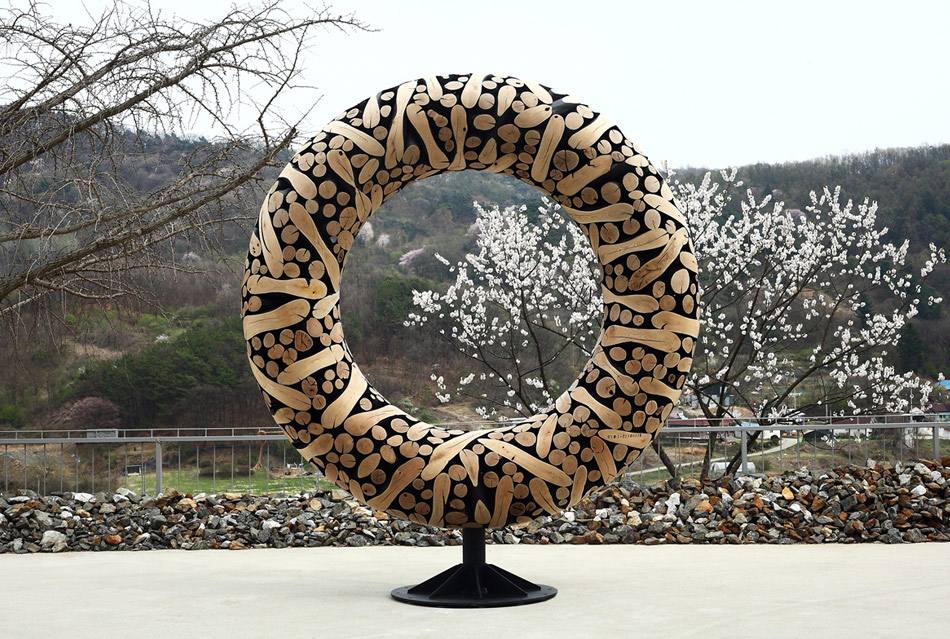
A Sculptor Who Builds with Patience
Lee’s process begins in the forest. He selects wood not for its perfection but for its story – cracked pine, split oak, gnarled branches that have been shaped by weather and time. In his studio, these fragments become puzzle pieces. He cuts them into uniform segments and aligns them by hand, embedding nails or bolts deep within to hold the composition together.
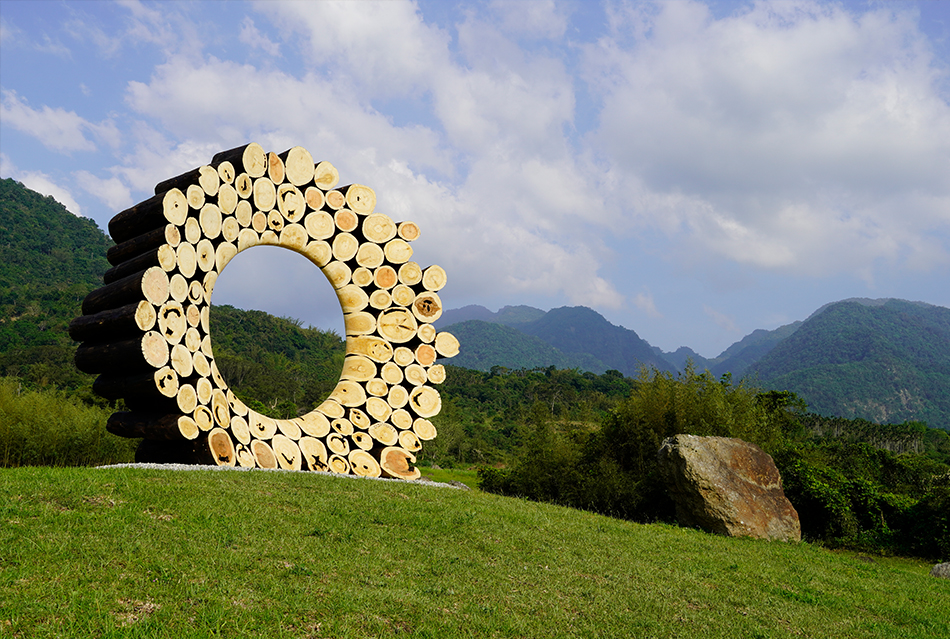
The result looks effortless, but every piece can take months of assembly. The final surface is sanded and polished until it gleams like stone. It’s a strange transformation: rough timber, once alive and imperfect, now turned into something smooth, symmetrical, and eternal.
This patience is central to Lee’s art. He once described his approach as “cooperation with nature” – not dominance, not destruction, but collaboration. He lets the material decide how far it will bend to his will.
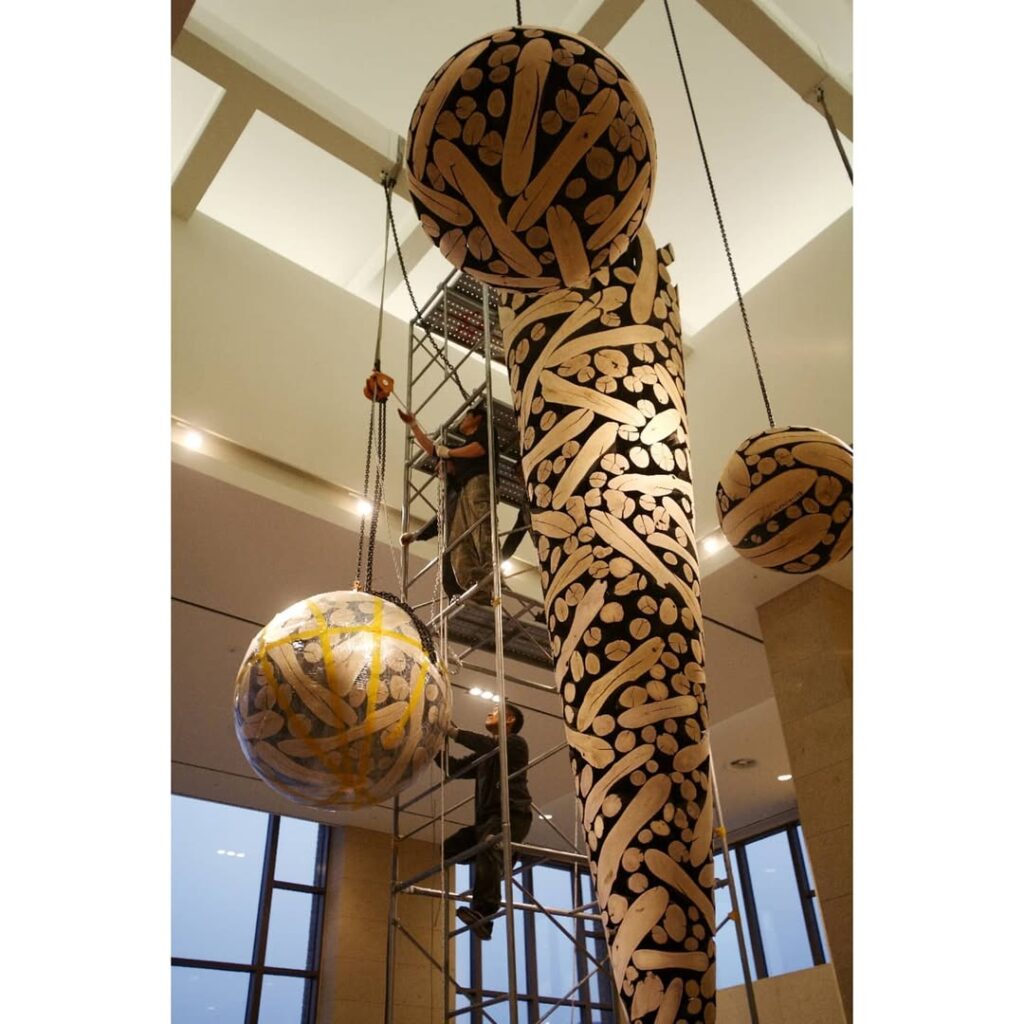
The Geometry of Nature
At the heart of Lee’s work lies a fascination with geometry. Circles, spheres, spirals, and rectangles appear repeatedly, almost obsessively. Yet nothing about them feels mathematical. His geometry grows from natural logic – the rhythm of tree rings, the pattern of roots spreading underground.
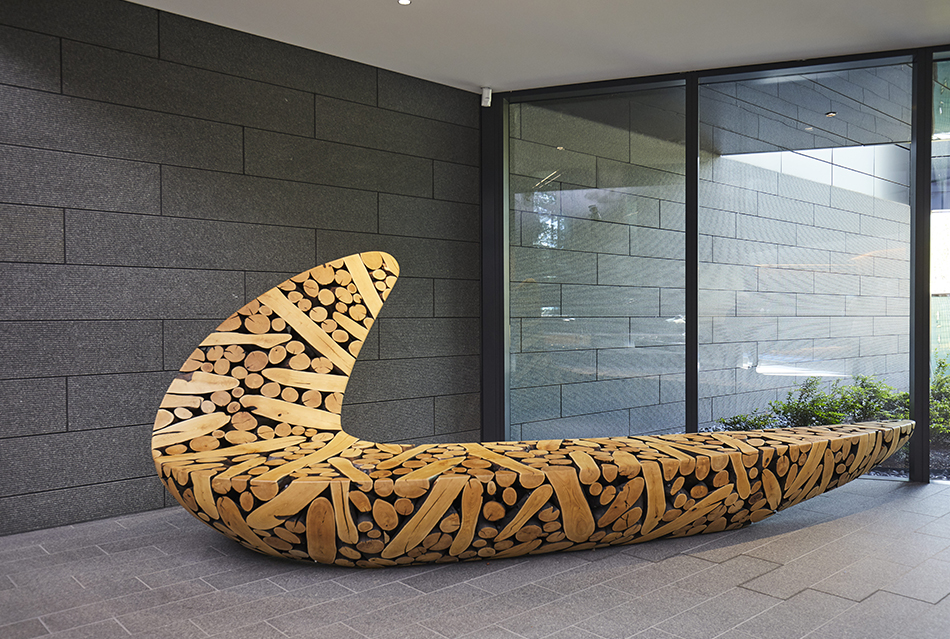
In pieces like 0121-1110=115041 or 0121-1110=109041, hundreds of wooden logs are sliced, stacked, and charred, forming hypnotic radial designs that seem to pulse with life. The precision feels architectural, but the texture keeps it alive and tactile.
These sculptures, often mounted on walls or standing as monumental outdoor works, are meditations on balance. They merge the warmth of wood with the cold precision of geometry – a union of chaos and discipline that speaks to the duality of human creativity.
Fire and Form
One of Lee’s most striking techniques is the use of charring. He burns the surface of wood until it turns black, then polishes it until it reflects light like obsidian. The charred surface brings depth and contrast, while the smell of smoke lingers in the studio, a reminder that creation always carries a trace of destruction.
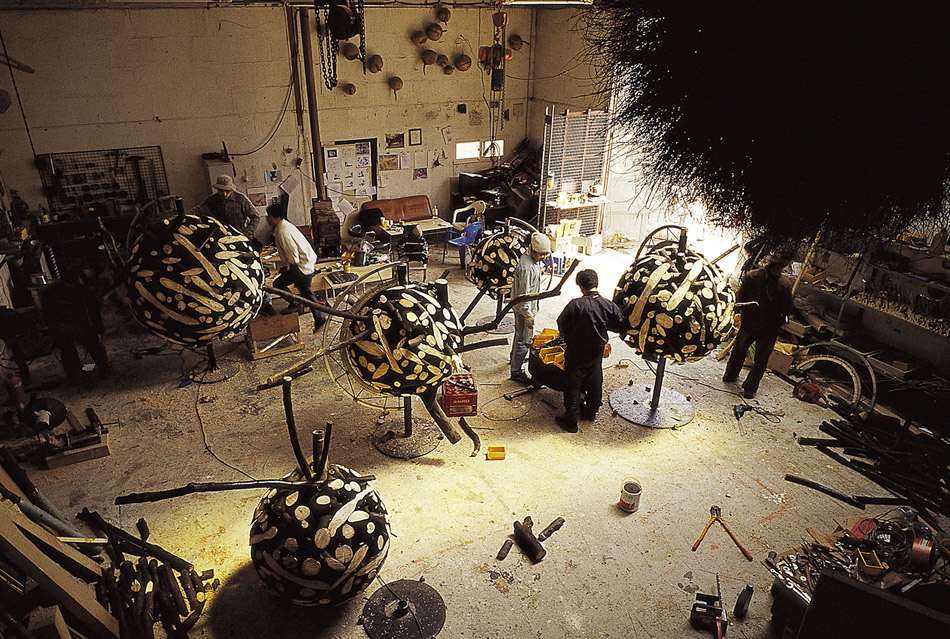
This process is not just visual; it’s philosophical. Burning removes impurities and reveals grain in a new way. It’s transformation through trial – the same way nature ages and reshapes materials over time.
Lee’s sculptures often juxtapose the charred blackness against clean, golden wood, creating visual harmony that feels both ancient and modern. It’s a dialogue between two states of being – life and decay, raw and refined, nature and human touch.
Between Wood and Metal
Although wood is his most recognizable medium, Jaehyo Lee also works extensively with metal – particularly stainless steel nails and bolts that pierce or bind his forms. The contrast of warm organic matter and cold industrial hardware defines much of his aesthetic.
In some sculptures, metal becomes part of the surface pattern, forming glimmering veins that catch the light. In others, it hides within the core, invisible but essential, holding the chaotic fragments together.
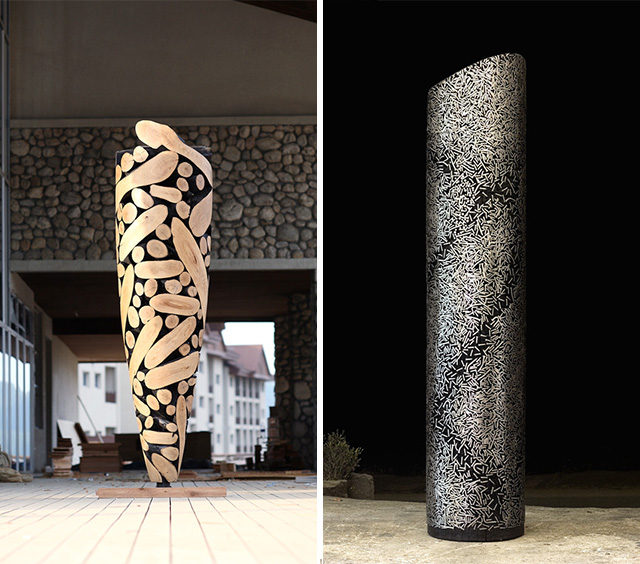
This union of opposites – organic and synthetic, visible and hidden – reflects Lee’s broader worldview. It’s not about purity of material but about coexistence. In an age of environmental fragility, his work quietly reminds us that balance is possible if we choose to cooperate with nature rather than exploit it.
Art That Feels Alive
Standing before one of Lee’s monumental installations, you don’t just see an object – you feel an energy. The arrangement of wood seems to radiate, as if the material is still alive, breathing in rhythm with the space around it.
That’s part of Lee’s genius: his ability to make stillness feel dynamic. His sculptures carry movement without moving – a kind of restrained vitality. Whether it’s a perfect sphere composed of hundreds of logs or a wooden bench that ripples like water, each creation holds the memory of its making.

Viewers often describe his work as meditative, even spiritual. The repetition of form and rhythm of texture create a sense of calm that feels almost ritualistic. In a world obsessed with speed and novelty, Lee’s work rewards slowness, attention, and quiet observation.
The Influence of Place
Though his sculptures are exhibited internationally – from London to New York to Seoul – their essence remains deeply Korean. They echo the country’s respect for craftsmanship and natural materials, rooted in centuries-old traditions of joinery and design.
Korean aesthetics often value imperfection, balance, and harmony with the environment. Lee channels that philosophy through a contemporary lens. His forms are minimal yet deeply emotional, grounded in the cultural idea that beauty arises not from dominance but from relationship.

It’s this balance of local spirit and universal form that makes his art resonate worldwide. Whether displayed in a museum or a natural landscape, his pieces seem to belong wherever they are placed.
Beyond Sculpture: Functional Art
While known mainly for his monumental works, Jaehyo Lee has also created a remarkable series of functional sculptures – chairs, benches, and tables that merge art with everyday life.
A Lee chair might look like a delicate sphere of timber, but it’s comfortable, stable, and entirely usable. These works challenge the boundary between fine art and design, proving that functionality can exist within sculptural beauty.

In these pieces, the same logic applies: nature’s texture becomes part of the experience. Sitting on one of his wooden chairs, you feel the smooth curves under your hand, the subtle warmth of the material. It’s an intimate way to experience art – not just to look, but to touch, to inhabit.
The Language of Materials
Lee’s art speaks through silence. There are no hidden symbols, no complex narratives – only material, form, and rhythm. Yet that simplicity is deceptive. Behind every surface lies thousands of tiny decisions: where to cut, where to align, how to polish, how deep to burn.
His precision has inspired countless younger artists working with natural materials. In a world of digital art and synthetic fabrication, Lee’s approach feels refreshingly human. Each piece bears fingerprints, tool marks, and the evidence of labor – all visible parts of the story.
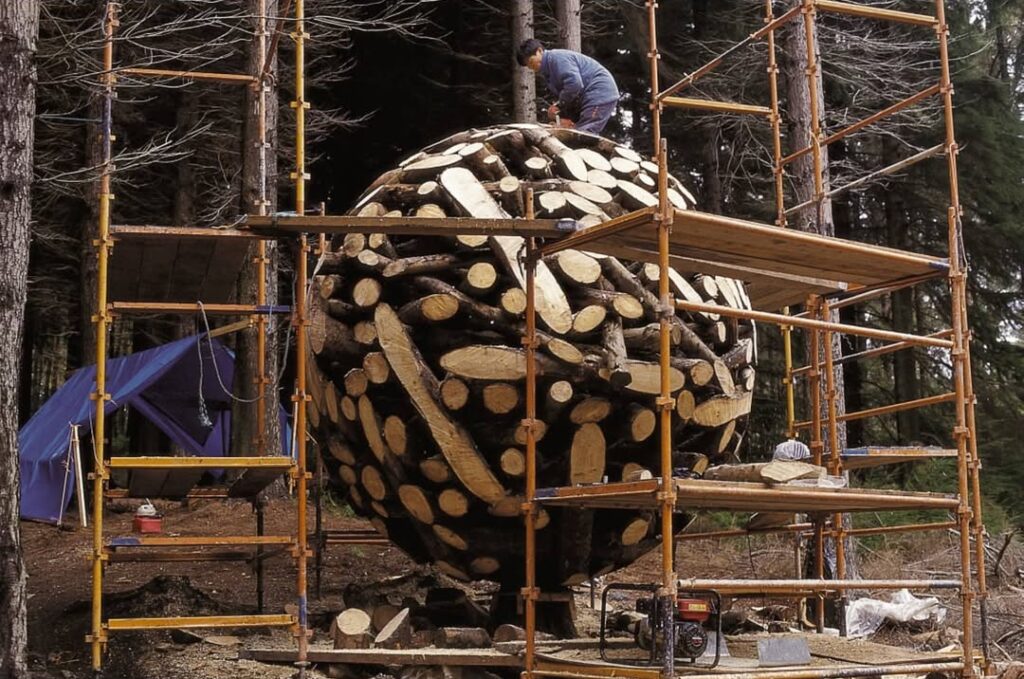
It’s not perfection he seeks, but harmony. The same way a forest thrives through diversity and imperfection, his sculptures thrive on the tension between order and randomness.
Nature Reimagined
What makes Jaehyo Lee’s work so captivating is his refusal to separate nature from design. He doesn’t imitate natural shapes – he collaborates with them. His sculptures are not representations of trees, stones, or waves; they are extensions of them.
In this way, Lee reimagines what wood can be. He treats it not as raw material but as a living participant in creation. Each sculpture is both a continuation of the forest and a reflection of human imagination.
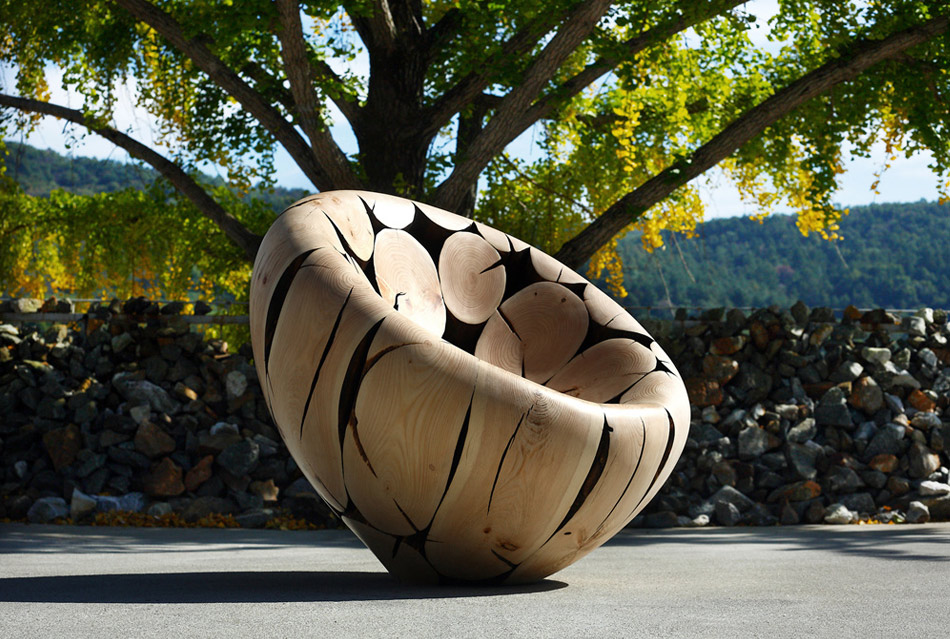
His work reminds us that art and nature are not opposites. They are two sides of the same creative force – one grows, the other constructs. Together, they reveal beauty in transformation.
A Legacy of Stillness and Strength
Today, Jaehyo Lee’s sculptures can be found in major collections and public spaces around the world. Yet he continues to work quietly in his studio, surrounded by piles of wood and the smell of sawdust.
He is not chasing trends or fame; he is chasing balance. His art is slow, tactile, and deeply honest – a meditation on material, patience, and human connection to the natural world.

In a time when everything is disposable and instant, his sculptures feel like reminders from another era. They invite us to pause, to see the geometry hidden inside a fallen branch, to find peace in the pattern of grain and fire.
In the end, Jaehyo Lee’s art is not just about wood – it’s about time.
The time it takes for trees to grow. The time it takes for hands to polish. The time it takes for humans to remember where their creativity truly comes from.
His sculptures are not monuments to perfection but to persistence – proof that harmony with nature is still possible if we listen carefully enough.

Reply